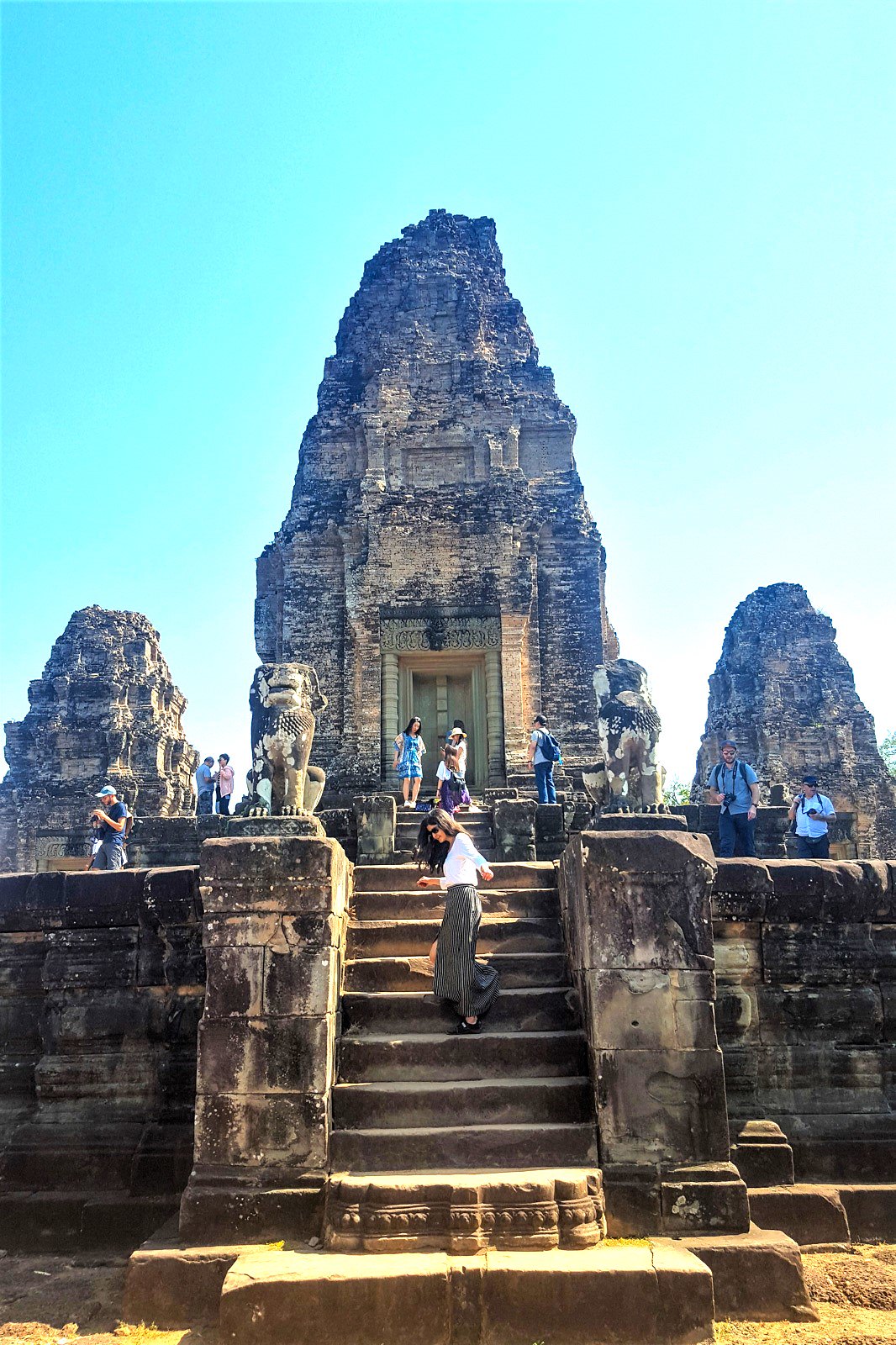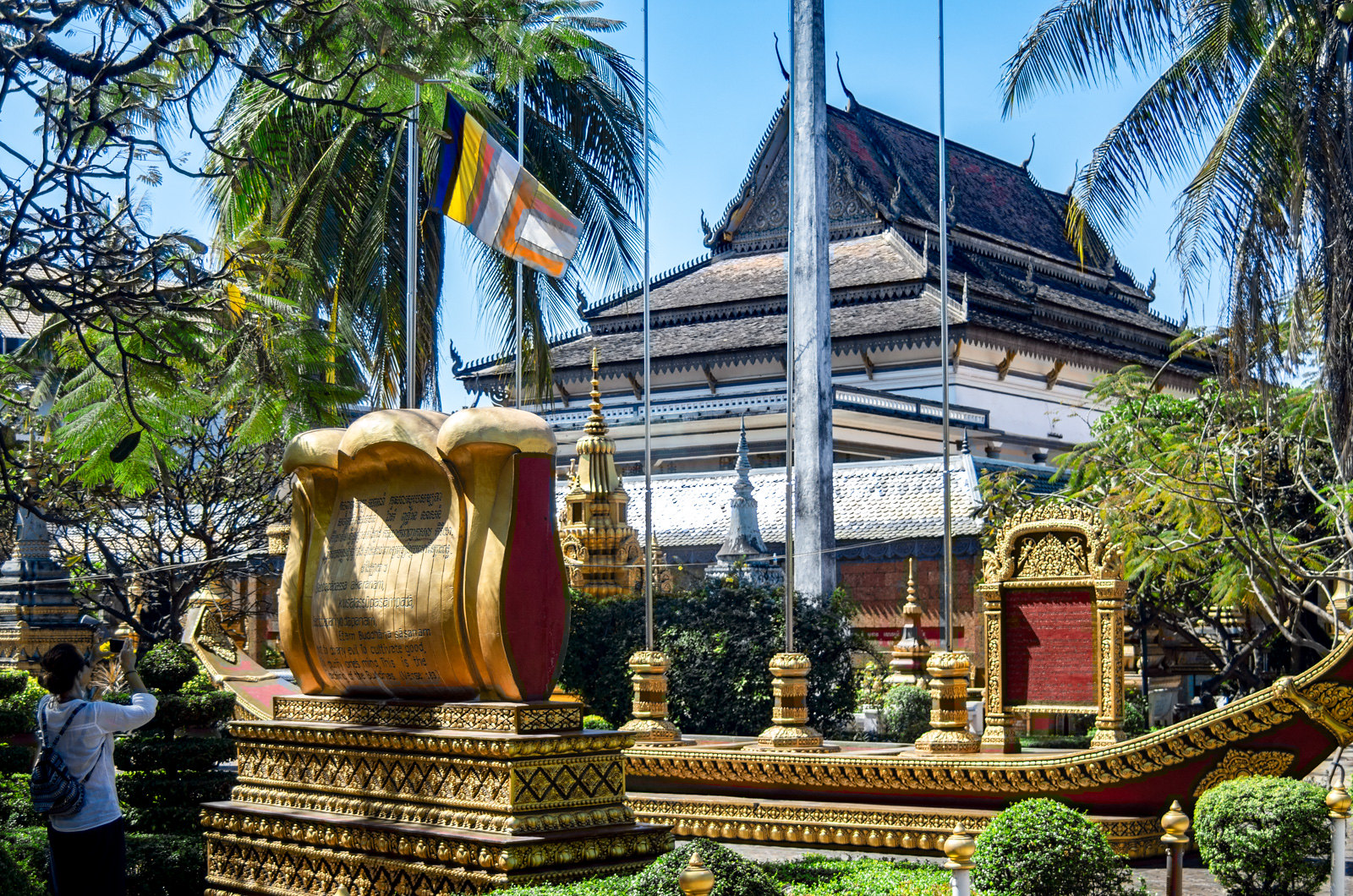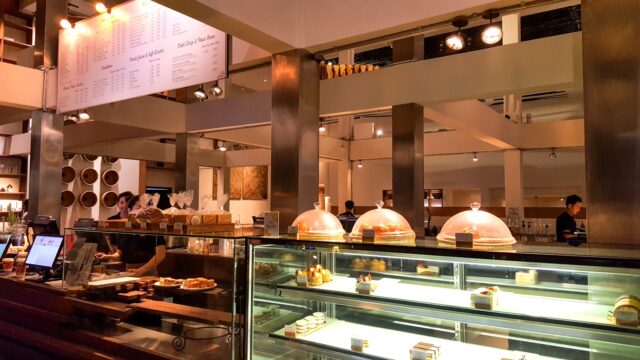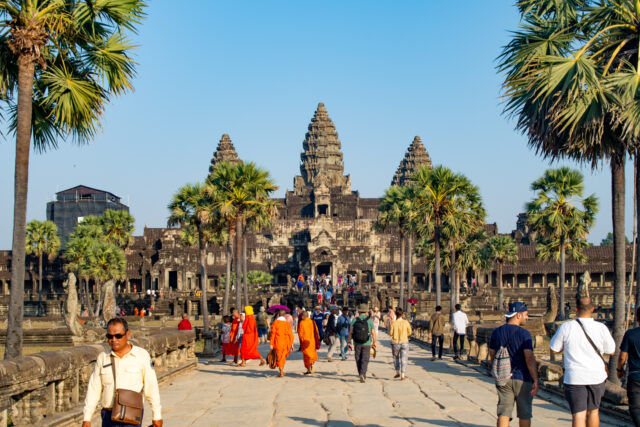When you hear about Cambodia, what do you imagine? 99% of people would answer Angkor Wat to this. The temple is even on the national flag of the country.
Visiting Angkor was on my top 10 list for a long while now. It always fascinated me. So when I started planning a trip to South East Asia, everything else was optional, but not this.
Obviously, Cambodia is not just Angkor, it has wonderful people, bloody recent history, beautiful nature and many other Interesting things to visit for. Whenever you decide to travel here, this guide may be of help.
When to go to Cambodia?
Cambodia, like its neighbours doesn’t have distinct seasons. It’s always hot there. The only difference is that March and April bring even higher temperatures, May to November is a rainy season, and the best time for tourists to visit falls on the dry season, before it gets too hot – November to February.
As you would easily guess, the prices are higher in this season, and there are more tourists at the attractions, making them crowded. However, from what I know, you will hardly ever find a time, when these places are without tourists. Maybe on a day, when it’s pouring rain.
Anyway, if you don’t mind some rain, humidity and a bit more mosquitoes (always an important point to take into consideration), you are good to go in the rainy season. Otherwise, choose from the dry months. I particularly dislike the humidity of the rainy season, when you feel clothes sticking to you, as soon as you get out. So you won’t be surprised that I chose the dry season. On our 5-day trip, we got no rain whatsoever and hardly any clouds. This last was not that great, as it was reaaaally hot.
Visa for Cambodia
The country heavily depends on tourism. So it comes as no surprise that its visa policies are quite liberal. There are a handful of nationalities, which can travel without a visa. But citizens of most countries can easily get either e-visa or Visa on Arrival at the airports and land border crossing points. Either of the options – VoA or e-visa – are valid for 30 days.
Visa on Arrival for Cambodia
We opted for Visa on Arrival. For obtaining VoA you will simply need your passport, a passport sized photo and 30 USD in cash. Have the cash exactly, as they will be unhappy, if you give bigger denominations and want to get change from them. One girl gave 40 and the guy shouted at her “thirty, thirty”. Not sure, how they sorted it in the end, but to avoid hassle, bring exact amount.
If you don’t have a photo, I believe they scan it from passport for 1 USD.
I have heard about “misunderstandings”, meaning that travelers had to pay more. From what I get, it happens at the land borders, so be aware and diligent. At the Siem Reap airport everything was easy and straightforward, we didn’t encounter any difficulties.
We arrived to the Siem Reap international airport. There was a queue on the right for Visa on arrival, and on the left, for going through passport control. You give your passport, money and photo to the officer at the first window and move to the end. Your passport goes through the hands of about a dozen people and gets to you in the end with a visa in it. The processing took about 10-15 minutes. The officers were not too friendly, but quite quick. Once you have your visa, passport control is really fast.
Online Visa for Cambodia
There is another option for getting your visa in advance. Even though the visa on arrival is very easy and I wouldn’t go through online application, some people prefer getting the e-visa. They claim that this makes them feel safer and saves time, when arriving (even if only 10-15 minutes).
This option can be used at Phnom Penh and Siem Reap International airport and five land borders. Be sure to check at the e-visa official website if the border you are entering from is eligible. You will need to upload your passport and photo. The price is 30 USD +6 USD processing fee.
Make sure to use the official website, as there are numerous other websites, some of them scammers, which offer visa, but I wouldn’t suggest trusting them. I read too many stories on Tripadvisor from travelers, who were scammed.
Money in Cambodia
Cambodia is one of the few countries, which have linked their money to US dollars and use the USD and their currency interchangeably. Another such country I have travelled to was Lebanon. This rule makes life for tourists easier. You only need to bring the dollars and, as the locals prefer to be paid in dollars anyway, you don’t need to change much money (we exchanged none, just used the dollars and the small amount of riel we got, as change).
Payment by card may be accepted at some places, but you often need cash. Paying by cash is preferred by locals, so carry some cash with you to the restaurants, markets, etc. I also suggest to bring smaller USD denominations. We had a number of 10s and 20s and even 1s and that helped a lot, especially with tuk tuks, markets and other places, where they would have problems giving you change for bigger denominations. You may get the change either in USD or riel.
Another thing to keep in mind is that they may not accept your dollars, if the notes have any rip or are old. A couple of times they asked us to give another note instead of slightly battered one. To avoid this, do bring the notes in good condition.
You can get USD from ATMs as well. As far as I know, with a foreign card, the ATMs will not give you riels anyway, only US dollars.
If you are left with riel by the end of your trip, it will be useless outside the country, so spend it fully.
Safety and scams in Cambodia
Overall, if you do usual tourist activities and take very good care, Cambodia can be quite safe. However, there are a number of things you need to take into consideration.
I have recently read on a number of forums that the bag snatchings are becoming very common in Phnom Penh, and to some extent in Siem Reap, especially near the Pub Street, where the bag snatchers and thieves are most active. We did not notice any violence or theft in Siem Reap ourselves whether during the day or night, but, of course, that’s just our experience, which may be very different from others’. Either way, you should be careful. As anywhere in the region and many big cities, keep your bag close to your body and away from the street to make it difficult for the motorcyclists to snatch it. Be careful, as you normally would, especially if you are drinking.
Mosquitoes carry several diseases in Cambodia. Dengue virus is a risk everywhere in the region. There is very low risk of malaria in Siem Reap and Phnom Penh, but there are certain areas in the country, where risk is higher. Definitely, bring mosquito repellent and be sure to apply it as often as needed. Read detailed information about the types of repellents here.
Transport in Cambodia
Intercity transport
Public transport in Cambodia is barely developed. The railway network is scarce. There are two lines running daily from Phnom Penh to Sihanoukville (in the south) and Phnom Penn to Battambang (North). This last is supposed to be running to Poipet as well but it’s currently suspended. You can find more information on the official railway website.
Buses are the more common option for travelling between the cities. There are a number of tour companies offering bus rides. Taking into account, that the road accidents are very common, do choose a reputable company.
Lake Tonle Sap provides a water route. There are a number of speed boats and slow boats running on it. We haven’t tried taking speedboats, as I read numerous bad reviews about them. It looked like quite a dangerous undertaking to try.
You can also fly between the major cities or to/from other cities in the region.
Transport inside the cities
Inside the cities, you find no public transport, except for Phnom Penh, which recently got a new public bus system. Elsewhere you will have to use tuk tuks, taxis, Grab or other private transportation.
Grab works quite well in our experience. In Siem Reap, for instance, you have an option of ordering a car or a small rickshaw-type transport. This is, of course, somewhat cheaper than usual tuk tuks (unless you are a local or negotiate a lot, which we hate). However, if you have no wifi or mobile internet, just stop one of the tuk tuks. Make sure to arrange the price in advance and do haggle, as they always say more than it usually costs. Also, pay only after you have arrived to your destination, otherwise you may be scammed.
What to wear in Cambodia
In general, Cambodia is a conservative country. They normally wear lose clothing and frown upon short shorts and the tank tops. However, if you are visiting touristy places, you will find numerous people, wearing whatever they like. So choice is yours.
Of course, if you are visiting Angkor (and you must, because no trip to Cambodia would be complete without it 🙂 ), there is a strict dress code. Read the post with detailed suggestions and photos on what to wear at this site.
In addition to this, even though the rules aren’t so strictly followed in temples around the country, to be respectful, you still would better cover your shoulders and knees. But in these wats you can be more lax, which is impossible in Angkor. I have entered a couple of them in shorts, as I was not planning on visiting wats that day and we just decided to. I also suggest to carry scarves, just in case, if you end up going to a place, where you may need to cover up.
In addition, unlike in Angkor, the currently working temples will require from you to take your shoes off. So bring socks, if you don’t like walking around barefoot.
Food in Cambodia
Cambodia offers great selection of different meals. We have been eating meals with rice and noodles all the time 🙂 They eat fish dishes, beef, pork, chicken, etc. The interesting things for me were the transparent noodles and the rice dishes with egg on top, which we noticed they really like.
You can eat for 5 USD per person in cheaper restaurants, but it can end up much more expensive, if you go to very touristy pricey places. Here you can find the list of some cheaper spots we tried at in Siem Reap and the good coffee places.
Other tips for travelling to Cambodia
- As everywhere in the region, carry toilet paper and hand sanitizer everywhere.
- The toilets can be squat or a western version.
- Tap water is not drinkable. Some say that the water supply to Siem Reap and Phnom Penh has been recently taken care of and the water is drinkable. However, I wouldn’t risk getting sick.
- Do haggle everywhere possible from markets to tuk tuks. Of course, at restaurants and certain other places prices are fixed, but generally Cambodians, as their neighbours, love to haggle.
- Unfortunately, you will see a lot of children trying to sell you things or beg. You are normally advised, not to give money to them, as this supports the practice of using children for making money. These children should be at school.
- Being a tropical country, Cambodia is overly hot. Sun is very strong, so you better bring a sunscreen with you. You can also buy them at local shops, but as in most of SE Asia, they will have whitening agents and will be quite expensive. Also don’t forget your sunglasses.
Please, let me know if I missed something or if you had a different experience.







On the travel wish list! Would love to visit Cambodia but we really have not started planning. This post will help when we start. Good to know in advance that we should not rely on public transport. Good to now that Grab will work well in the cities.
I am sure, you will love your trip there. Will be happy to give any advice needed, when you start planning
All good tips when travelling in a lot of Southeast Asia. I was close to Cambodia but did not have enough time to visit when in Vietnam and Thailand.
I hope you will manage to visit Cambodia next time. I haven’t yet visited Vietnam in the region, it’s in pipeline 🙂
Cambodia is in my bucket list so thank you for this. Its also good to know that my birthday falls around the best time to visit.
Thanks for the useful to tips. Cambodia is high on my list so great to see these tips ahead of me visiting.
It’s hard not to help and support kids when you see them struggling but I understand the reasoning behind it.
Happy if it helps. I agree, it’s heartbreaking seeing the children like that. But while unfortunately we can’t help them get out of the situation altogether, us giving them money just exacerbates their exploitation 🙁
Cambodia is definitely on my bucket list, so this is full of some great tips, especially around the use of dollars, thank you!
These are such great great tips for traveling to Cambodia. Seeing the kids is probably the hardest for me but understanding that I really can’t help even by giving money is important. Otherwise, Cambodia looks like a pretty awesome place to visit and on my bucket list.
Visiting Cambodia is one of my dreams!! I hope I can plan a trip sooner or later! Thanks for this article!
If I’d had more vacation days, I would’ve gone this year after my Vietnam trip! 😦 But alas. Thanks for all the tips! I’d love to try the food there and super looking forward to planning a future trip!
Ah, the time and money restrictions are tough. But I hope you will manage on your next trip. On the other hand, I am planning Vietnam next year 🙂